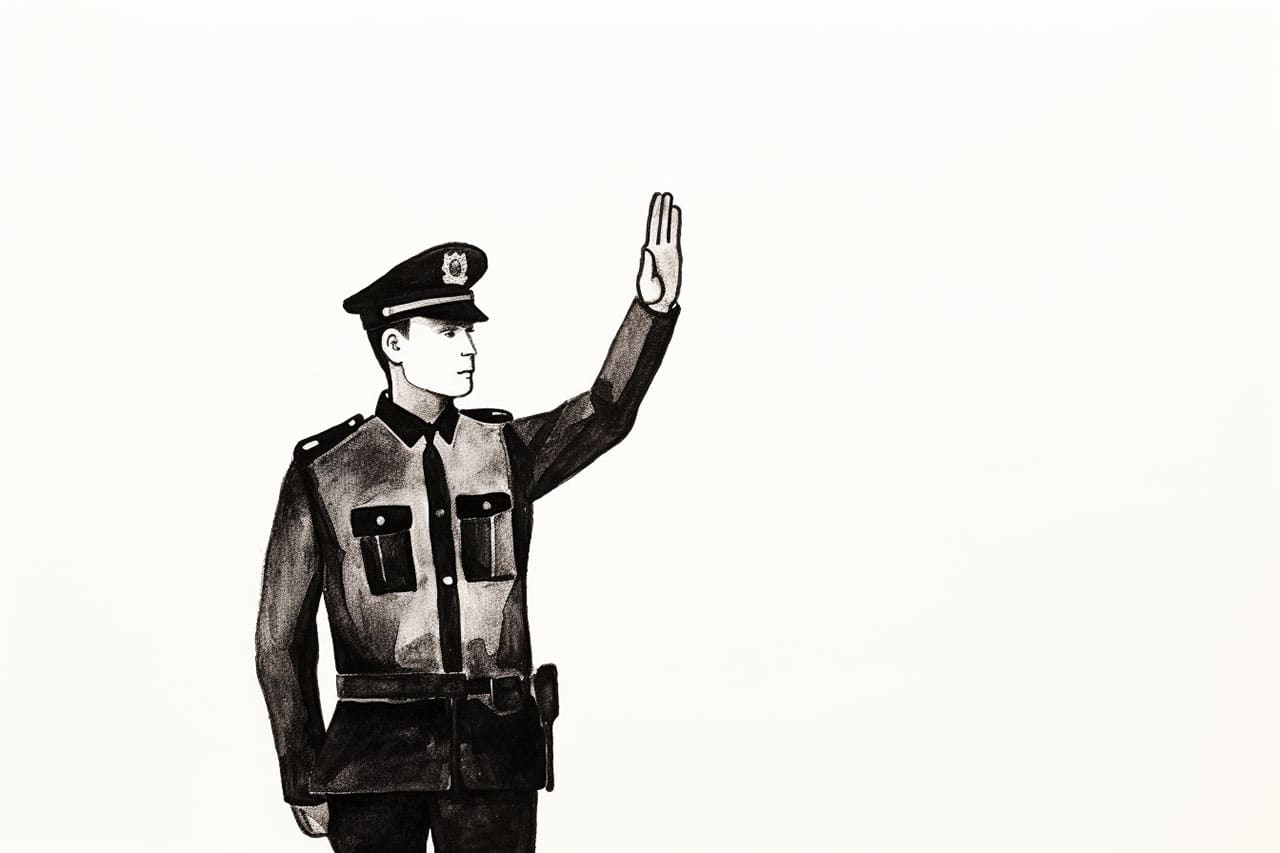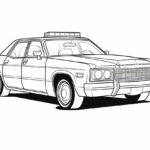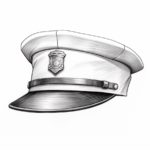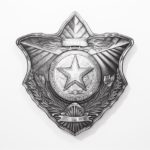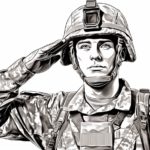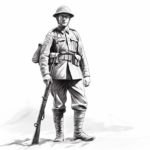As an expert artist and drawing instructor, I’m here to guide you step-by-step on how to draw a police officer in a very realistic way. This tutorial will help you capture the essence of a police officer’s uniform, pose, and expression in a clear and concise manner. So grab your materials and let’s get started!
Materials Required
To begin with, make sure you have the following materials ready before you start drawing:
- A sheet of paper or a sketchbook
- Pencils of varying hardness (2H, HB, 2B, 4B, and 6B)
- An eraser
- A sharpener
- Reference images of police officers for inspiration (optional but helpful)
Now that we have everything we need, let’s begin our drawing!
Step 1: Basic Sketch
Let’s start by drawing a basic skeleton of our police officer. Begin with a light pencil and sketch the outlines of the head, torso, and limbs. Keep the lines loose and simple at this stage, as we’ll be refining them later.
Step 2: Head and Facial Features
Now, let’s focus on the details of the head and facial features. Start by drawing the eyes, nose, and mouth. Pay attention to the shape of the face and the proportions of each feature. Police officers often have a strong, determined expression, so emphasize their facial features accordingly.
Step 3: Adding the Uniform
Next, let’s outline the police officer’s uniform. Begin by sketching the collar and shoulder areas. Then, draw the outline of the shirt, making sure to indicate the buttons and pockets. Pay attention to the folds and creases in the fabric to add realism to your drawing.
Step 4: Drawing the Arms and Hands
Moving on to the arms and hands, remember that police officers often wear gloves or have their hands covered. Sketch the basic shape of the arms, paying attention to the proportions and angles. Then, define the shape of the hands, making sure to show the position of the fingers and any accessories such as handcuffs or a police baton.
Step 5: Sketching the Legs and Boots
Now let’s shift our focus to the lower half of our police officer. Sketch the shape of the thighs and calves, paying attention to the perspective and angles. Next, draw the outline of the boots, including any details such as laces or buckles. The boots should appear sturdy and well-defined, as they are an essential part of the police officer’s uniform.
Step 6: Refining the Pose and Proportions
At this stage, take a step back and evaluate the overall pose and proportions of your police officer. Make any necessary adjustments to ensure that everything looks balanced and anatomically correct. Pay attention to the alignment of the body parts, from the head down to the feet.
Step 7: Adding Details and Shading
Now that the basic structure of your police officer is complete, it’s time to add some details and shading to bring your drawing to life. Use a darker pencil to define the features and lines of the uniform, emphasizing the different textures such as the fabric, buttons, and accessories.
To add depth and dimension, use light and shadow to create a sense of volume. Observe your reference images or imagine a light source in your drawing and determine where the highlights and shadows would fall. Gradually build up the shading, using smooth and even strokes to create a realistic effect.
Step 8: Final Touches
Lastly, take a moment to review your drawing and make any final adjustments or refinements. Erase any unwanted lines and smudges, and go over the important details to make them stand out. Pay attention to the overall composition and make sure your police officer is visually appealing and well-rounded.
Congratulations, you’ve successfully drawn a police officer! With practice, you’ll continue to improve your skills and create even more realistic and detailed drawings.
Conclusion
In this tutorial, we explored the step-by-step process of drawing a police officer. We started with a basic sketch, gradually added details, and finished with shading and final touches. By following these steps and practicing regularly, you’ll be able to capture the essence of a police officer in your drawings.
So grab your pencils, paper, and reference images, and let your creativity flow. Enjoy the process of bringing a police officer to life on your canvas. Remember to have patience and persistence, as mastering the art of drawing takes time. Happy drawing!

